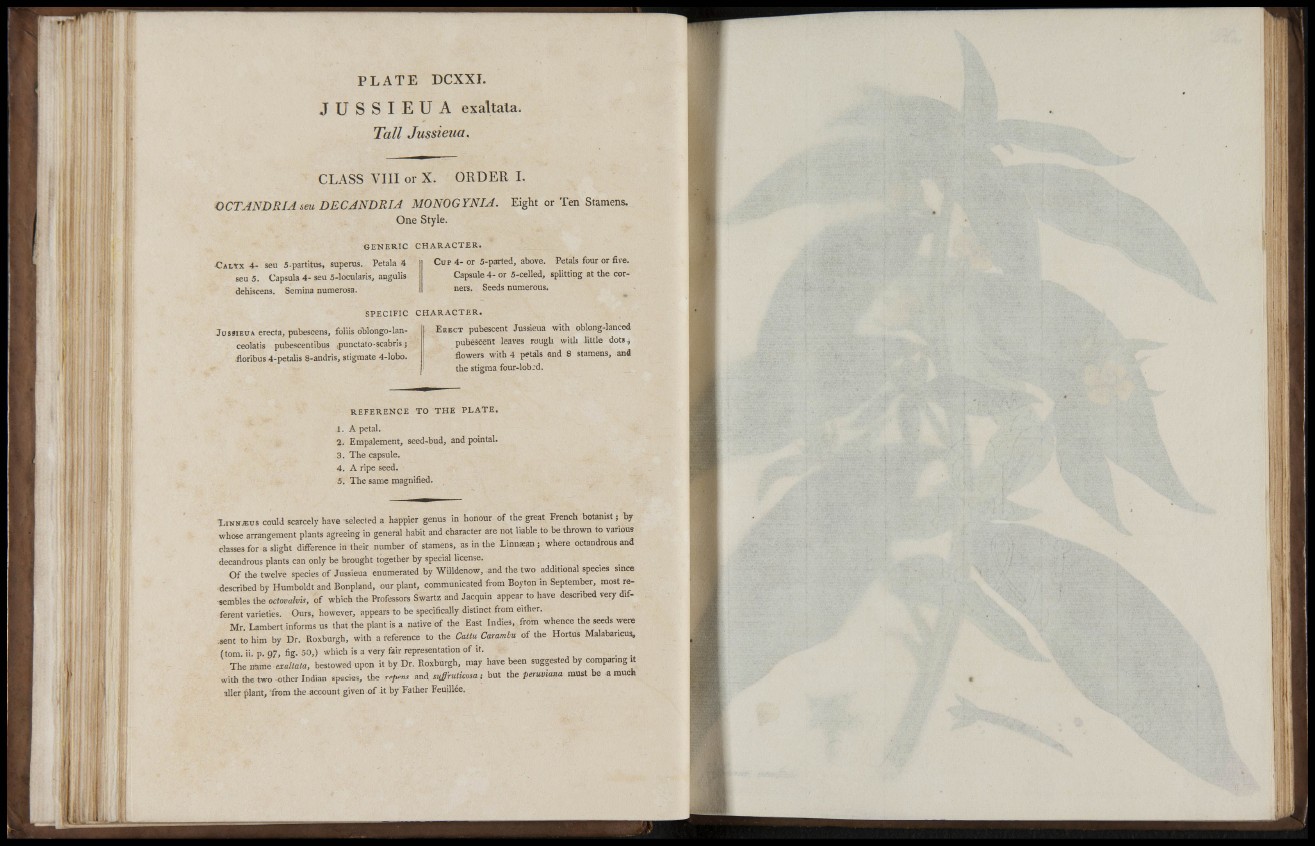
I•l ?
'li:
P L A T E DCXXI.
J U S S I E U A exaltala.
Tali Jussieua.
CLASS VIII or X. ORDER 1.
OCTANDRIA sen DECANDRIA MONOGYNIA. Eight or Ten Stamens.
One Style.
GENERIC CHARACTER.
•CALYX 4- seu 5-partitus, superes. Pétala 4
seu 5. Capsula 4 - seu S-locularis, angulis
dehiscens. Semina numerosa.
CUP 4 - or S-parted, above. Petals four or five.
Capsule 4 - or 5-celled, splitting at the corners.
Seeds numerous.
SPECIFIC CHARACTER.
JUSSIEUA erecta, pubescens, foliis oblongo-lanceolatis
pubescentibus ,punctato-scabris j
-floribus 4-petalis 8-andris, stigmate 4-lobo.
ERECT pubescent Jussieua with oblong-lanced
pubescent leaves rough with little dots.;
flowers with 4 petals and 8 stamens, and
the stigma four-lob;d.
t . l ,
Í 1
II'
I f^
REFERENCE TO THE PLATE.
1. A petal.
2. Empalement, seed-bud, and pointal.
3. The capsule.
4 . A ripe seed.
5. The same magnified.
XiNN^us could scarcely have selected a happier genus in honour of the great French botanist; by
whose arrangement plants agreeing in general habit and character are not liable to be thrown to various
classes for a slight difference in their number of stamens, as in the Linnaean ; where octandrous and
decandrous plants can only be brought together by special license.
Of the twelve species of Jussieua enumerated by Willdenow, and the two additional spec.es since
described by Humboldt and Bonpland, our plant, communicated from Boyton in September, most resembles
the ociovalvis, of which the Professors Swartz and Jacquin appear to have described very different
varieties. Ours, however, appears to be specifically distinct from either.
Mr Lambert informs us that the plant is a native of the East Indies, from whence the seeds were
.sent to him by Dr. Roxburgh, with a reference to the Caltu Carambu of the Hortus Malabancua,
(torn. ii. p. 97, fig. 50,) which is a very fair representation of it.
The n^me exaltala, bestowed upon it by Dr. Roxburgh, may have been suggested by comparing it
with the two other Indian species, the repens and sujrutkosa; but the permimia must be a much
aller plant, from the account given of it by Father Feuillee.
T T ^